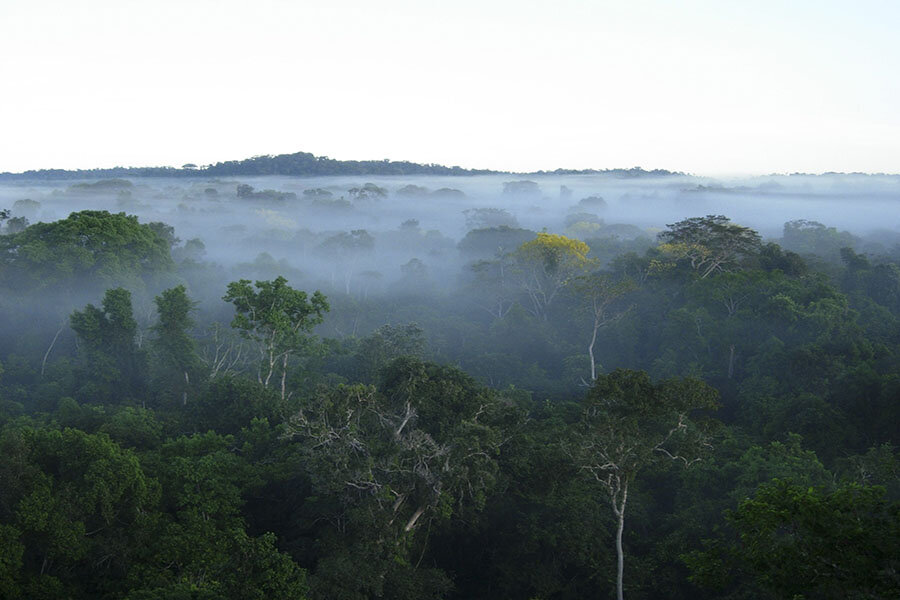Ancient forests were thrifty with CO2, study finds
Loading...
Millions of years ago, the Earth's atmosphere was starved of carbon dioxide, and this scarcity seems to have prompted the trees to tighten their belts.
In a paper titled "Weathering by tree root-associating fungi diminishes under simulated Cenozoic atmospheric CO2 decline" published in Biogeosciences, an open-access journal of the European Geosciences Union, a team of researchers in the UK seek to explain how the planet's atmosphere and climate stabilized over the past 24 million years.
The researchers found that low carbon dioxide concentrations in the atmosphere act as a "carbon starvation" brake that reduces the capacity of trees to remove CO2 from the atmosphere, according to a press release by the European Geoscience Union.
The consumption of carbon dioxide is directly proportional to weathering rates.
When the concentration of carbon dioxide falls from 1500 parts per million (ppm) to 200 ppm, weathering rates also drop by a third.
But what is weathering? It's the breakdown of rocks, soil, and minerals – many of which have silicates – when exposed to microorganisms, fungi, rain, or the atmosphere.
These silicate minerals come in contact with carbonic acid (carbon dioxide and water in the air react together to form carbonic acid) in a process that removes carbon dioxide from the atmosphere.
The products of these processes ultimately reach the oceans, where they form carbonate rocks. These rocks act as a storehouse of carbon dioxide and "lock away carbon on the seafloor for millions of years, preventing it from forming carbon dioxide in the atmosphere," stated the press release.
And forests play a huge role in regulating the weathering process because trees, and fungi found in tree roots, break down rocks and minerals in the soil to get nutrients for growth.
But the researchers found when the CO2 concentration was low – at about 200 parts per million (ppm) – trees and fungi were far less effective at breaking down rocks, soil, and silicate minerals, because of the paucity of carbon-energy. Today, carbon dioxide levels are about twice that.
"We recreated past environmental conditions by growing trees at low, present-day and high levels of CO2 in controlled-environment growth chambers," said Joe Quirk from the University of Sheffield and the lead-author of the paper. "We used high-resolution digital imaging techniques to map the surfaces of mineral grains and assess how they were broken down and weathered by the fungi associated with the roots of the trees."
Dr. Quirk said that significant mountain building activity in the Andes and Himalayas could have increased the amount of silicate rocks on the land that could be weathered over time.
"This increased weathering of silicate rocks in certain parts of the world is likely to have caused global CO2 levels to fall,” Quirk said.
But the trees and fungi did continue to break down minerals and hence, the concentration of carbon dioxide never fell below 180-200 ppm, according to the press release.
The findings of the study will help scientists understand "the processes that affect and regulate climates of the past and our study makes an important step forward in understanding how Earth’s complex plant life has regulated and modified the climate we know on Earth today," Quirk said.








